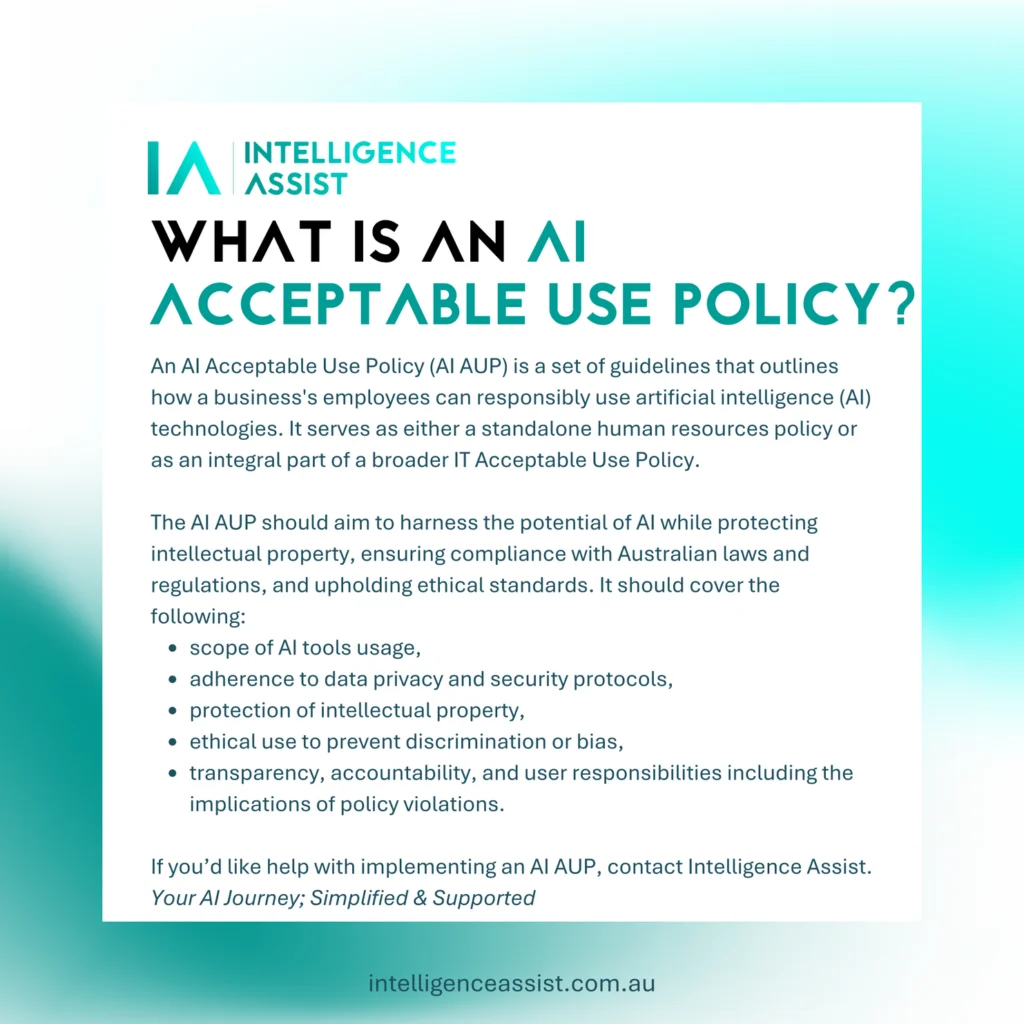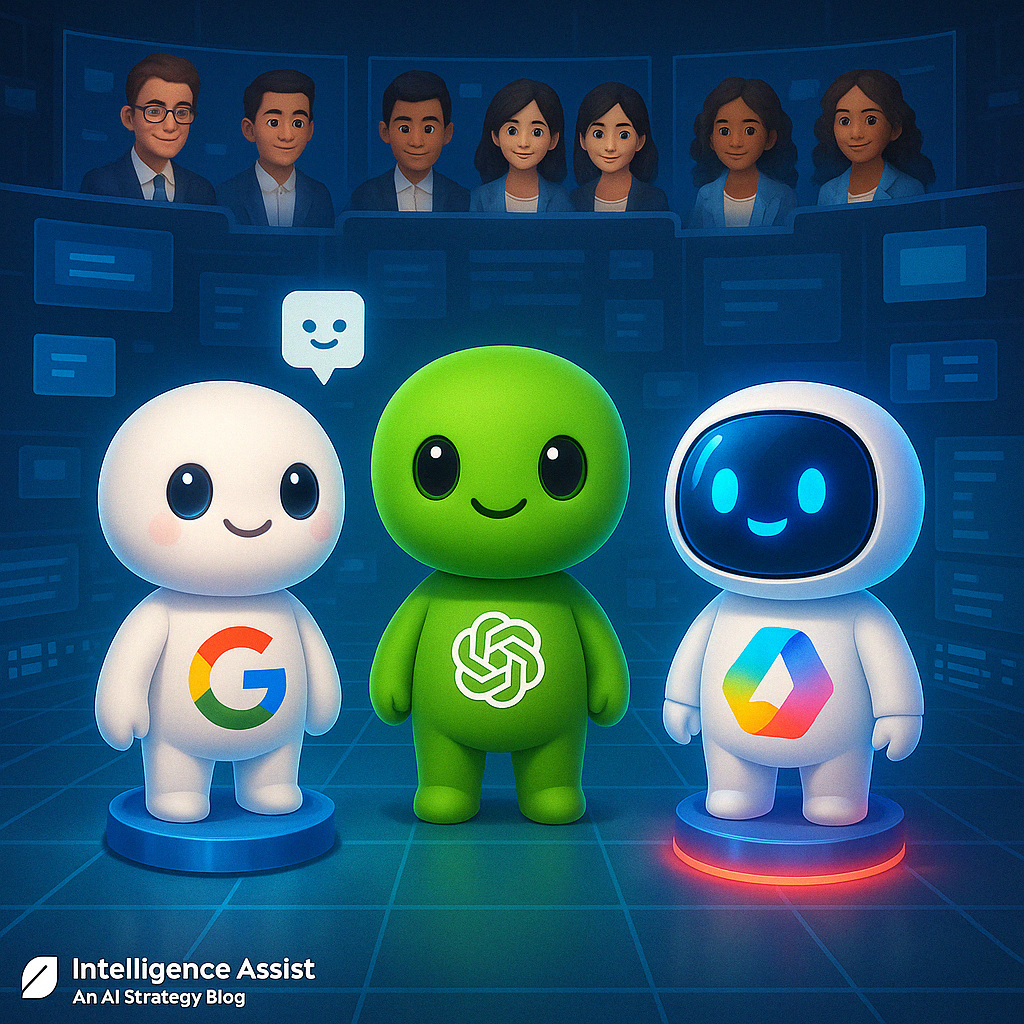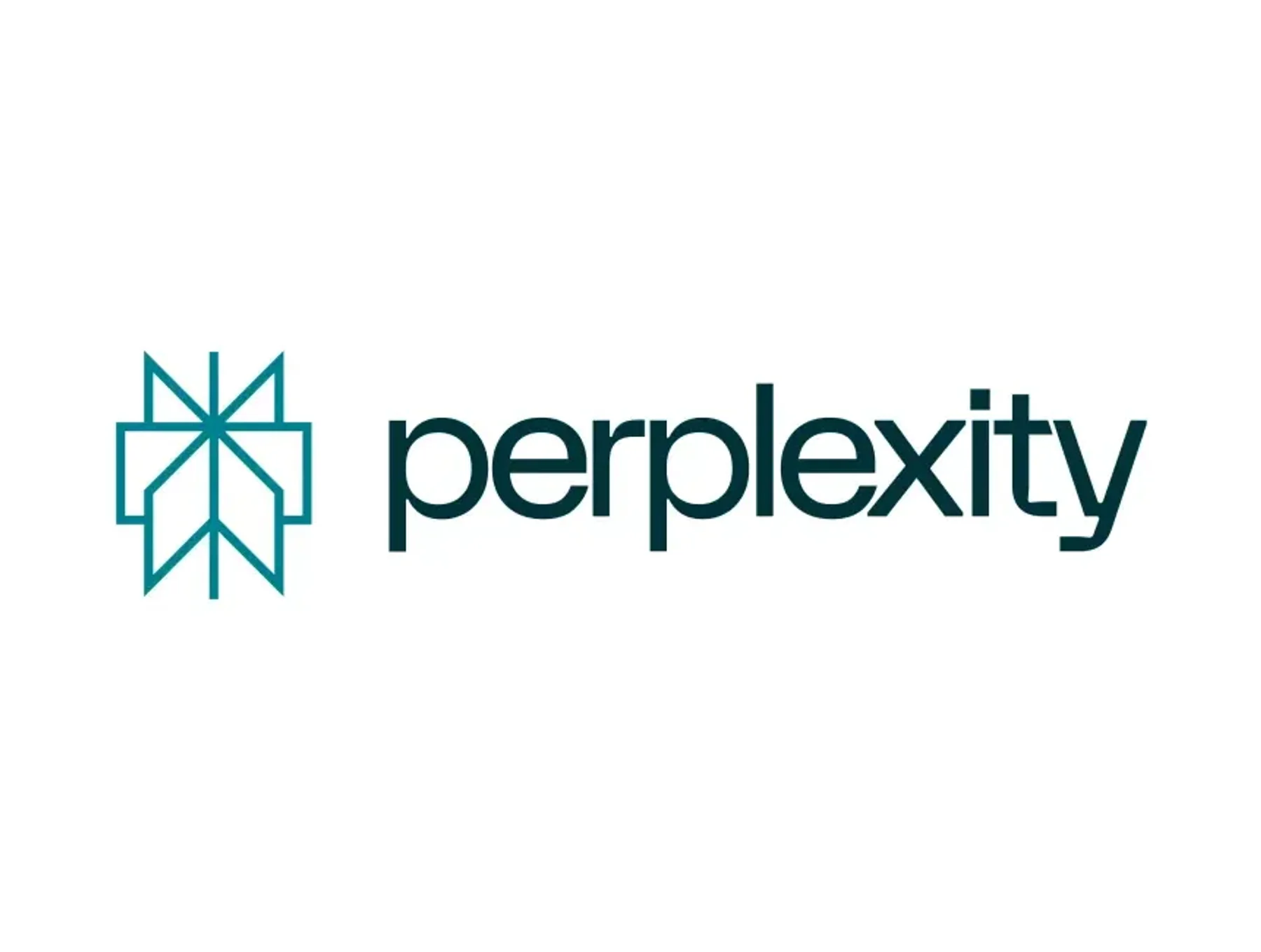In the ever-evolving digital landscape, Australian small businesses are increasingly integrating Artificial Intelligence (AI) into their operations. From customer service chatbots to data analysis tools, AI is revolutionising the way businesses operate, offering unprecedented efficiencies and competitive advantages. However, with great power comes great responsibility. The rapid advancements in AI, often referred to as “leaps forward,” necessitate a robust framework to ensure its ethical and responsible use. This is where an AI Acceptable Use Policy (AUP) becomes essential.

Imagine a small retail business that uses AI to enhance its marketing efforts. The business employs an AI tool to analyse customer data and purchase history to create personalised marketing campaigns. This AI system is designed to send tailored recommendations and promotional offers to customers based on their previous interactions with the business. However, suppose the AI tool mistakenly accesses and uses private customer data without consent, perhaps due to a misunderstanding in its programming or a flaw in the data handling protocols. This breach could lead to severe privacy violations, resulting in customer distrust, legal challenges, and potential fines under privacy laws such as the General Data Protection Regulation (GDPR) or the Australian Privacy Act.
Consider a small software development company that utilises AI-powered collaboration tools to improve productivity and facilitate remote work. These tools, equipped with machine learning capabilities, are designed to analyse documents and communications to provide project management assistance and automate routine tasks. However, during the course of its operations, an employee inadvertently uploads proprietary source code to a shared AI-powered platform that is not sufficiently secure. The platform’s AI, designed to optimise code by analysing patterns and suggesting improvements, inadvertently makes this proprietary code accessible to external parties due to a security vulnerability. A competitor, also using the same AI-powered platform, gains access to this code through the AI’s suggestion engine, which does not properly differentiate between public and private repositories. The competitor then uses this code to enhance their own software, effectively stealing the IP and gaining a competitive advantage.
In a notable legal misstep, a New York lawyer used the AI tool ChatGPT to assist in drafting a legal brief for a personal injury case against an airline. Unbeknownst to this lawyer, the AI-generated brief included citations to six fictitious legal cases, which he submitted in federal court. This error was highlighted when the airlines lawyers and the presiding judge could not verify the cited cases, leading to a deeper investigation. The incident culminated in the Judge imposing sanctions on the lawyer and his law firm for their reliance on the inaccurate AI-generated content and their failure to verify the authenticity of the information, which constituted a breach of professional responsibility.
Key Components of an AI Acceptable Use Policy
An AI AUP is not just a set of rules; it’s a narrative that aligns with your business’s values and mission. It tells the story of how you responsibly harness AI’s potential while safeguarding your intellectual property (IP) and adhering to Australian laws and regulations.
An effective AI AUP should encompass the following elements:
Scope of Use: Clearly define what AI tools and technologies are covered by the policy and how they can be used within the business.
Compliance with Laws: Ensure adherence to Australian laws, such as the Privacy Act 1988, which governs the use of personal information.
Data Privacy and Security: Establish protocols for handling sensitive data, particularly when using AI for data analysis or customer interactions.
Intellectual Property Protection: Prevent IP leakage by prohibiting the use of unauthorized third-party content to train AI models.
Ethical Standards: Address the use of AI in a manner that respects human rights and avoids discrimination or bias.
Transparency and Accountability: Implement mechanisms for monitoring AI use and ensuring accountability for AI-generated outputs.
User Responsibilities: Educate employees on their roles in using AI tools responsibly and the consequences of policy violations.
The Australian Context
Australian small businesses must navigate a complex regulatory environment. The absence of specific legislation for AI in Australia means that general regulations, such as the Privacy Act 1988, apply depending on the AI’s application. However, the Australian government is actively seeking public input on AI policy settings, indicating a move towards more defined AI regulation.
My business recently updated its IT Acceptable Use Policy to include AI. This proactive step ensures that we use AI tools in a manner that respects privacy, protects our IP, and aligns with Australian regulations. By doing so, we’ve created a safe space for innovation while mitigating risks.
Every business is unique, and an AI AUP should reflect your specific needs and context. If you’re an Australian small business owner looking to navigate the complexities of AI integration, I invite you to schedule a connect-with-me. Together, we can craft a policy that not only protects your business but also positions it for sustainable growth in the AI era.
Remember, an AI Acceptable Use Policy is not just a precaution; it’s a blueprint for responsible innovation.








